The Curse Of Chief Chocorua Who Died On The Mountain That Bears His Name
Ellen Lloyd - AncientPages.com - Located near Conway, New Hampshire, North America, Mount Chocorua is one of the world’s most stunning mountains and a frequent target for photographers who want to capture its beauty.
Left: Mount Chocorua, John White Allen Scott (1815-1907). Credit: Public Domain - Right: Chief Chocorua commits suicide leaping off the mountain. Credit: Chocorua Lake
Mount Chocorua is named after a Native American chief who died there in the early 1700s. According to a legend, he yelled a curse and then jumped off a precipice on the eastern face of the summit. Chief Chocorua decided to end his life in a tragic way because he felt there was no other option.
First Written Mention Of Chief Chocorua
Many have wondered whether Chief Chocorua really existed and whether the vents are authentic. Those who have researched this story have found evidence that the first mention of Chocorua occurred in 1828.
Lawrence Shaw Mayo wrote in his article The History of the Legend of Chocorua that “in October 1828, a young New York artist named Thomas Cole visited the White Mountains in search for inspiration. He had already won renown as a landscape painter, especially of Hudson River scenery.
Mount Chocorua and Chocorua Lake. Credit: Kimon Berlin, Public Domain, CC BY-SA 4.0
On his way to the Crawford Notch, he lodged for a night or two in or near Tamworth and climbed Chocorua. Under the date of October 3, 1828, he wrote on one of the blank leaves of his sketchbook, which he used for keeping a diary: “We set out to climb Chocorua peak… On the path through the wood, we came to windfalls, the track of the tornado, where every tree is laid prostrate.
We came out, at length, to a lonely and deserted clearing, just at the foot of the mountain. The cause of this abandonment is, they say, the poisonous effects of water upon the cattle; the result, according to tradition, of the curse of Chocorua, an Indian, from whom the peak, upon which he was killed by the whites, takes its name.”
Why Did Chief Chocorua Curse The White Men And Commit Suicide?
According to legend, Chief Chocorua, who was a prophet lived with his young son in the region that we today know as Tamworth, New Hampshire. He wanted to avoid conflicts with the white men, and he became a good friend to Cornelius Campbell, a settler who lived in the same area with his family.
An awful tragedy ended their friendship. One day, Chief Chocorua had to leave his home and participate in a tribe meeting. He asked the Campbell family if his little son could stay with them while he was gone. They naturally agreed but Campbell's wife didn’t pay enough attention to what the youngster was doing while playing.
Chief Chocorua’s son found a bottle, opened it, and consumed its contents. The bottle contained poison that Cornelius Campbell had made to eliminate troublesome foxes. When Chief Chocorua returned, he found his son dead.
Grief and anger overwhelmed him, and he sought revenge. He went to Campbell’s property and murdered Cornelius’s wife and children. When Cornelius Campbell came home and found the dead bodies of his family, he suspected this crime had been committed by Chief Chocorua.
Chief Chocorua trapped on the summit. Credit: Chocorua Lake
Equipped with a gun Campbell, and perhaps other settlers as well chased Chief Chocorua up the mountain that today bears his name.
When the Native American Chief reached its highest peak and saw there was nowhere, he could escape, he raised his arms to the sky and shouted: “A curse upon ye, white men! May the Great Spirit curse ye when he speaks in the clouds, and his words are fire! Chocorua had a son—and ye killed him while the sky looked bright! Lightning blast your crops! Wind and fire destroy your dwellings!
The Evil Spirit breathes death upon your cattle! Your graves lie in the war-path of the Indian! Panthers howl, and wolves fatten over your bones! Chocorua goes to the Great Spirit—his curse stays with the white men!”
Then, he jumped of the mountain and died. “The prophet sunk upon the ground, still uttering inaudible curses – and they left his bones to whiten in the sun. But his curse rested on the settlement. The tomahawk and scalping knife were busy among them, the winds tore up trees ad hurled them at their dwellings, their crops were blasted, their cattle died and sickness came upon their strongest men. At last, the remnant of them departed from the fatal spot to mingle with more populous and prosperous colonies,” Lawrence Shaw Mayo wrote.
Life never became the same again for Cornelius Campbell. He became a hermit and avoided contact with everyone. Two years later, he was found dead in his house.
This is the legend that explains how beautiful Mount Chocorua got its name.
Updated on December 15, 2023
Written by Ellen Lloyd – AncientPages.com
Copyright © AncientPages.com All rights reserved. This material may not be published, broadcast, rewritten or redistributed in whole or part without the express written permission of AncientPages.com
Expand for referencesMayo, Lawrence Shaw. "The History of the Legend of Chocorua." The New England Quarterly 19, no. 3 (1946): 302-14. doi:10.2307/361968.
More From Ancient Pages
-
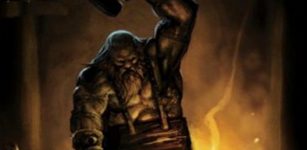 Ancient High-Technology: Automatons In Greek Mythology
Ancient Technology | Feb 22, 2015
Ancient High-Technology: Automatons In Greek Mythology
Ancient Technology | Feb 22, 2015 -
 LIDAR Discovers Giant Ancient Mesoamerican Calendar – Structures Were Aligned To The Stars
Archaeoastronomy | Jan 10, 2023
LIDAR Discovers Giant Ancient Mesoamerican Calendar – Structures Were Aligned To The Stars
Archaeoastronomy | Jan 10, 2023 -
 Encounter With Time Window At The Upper Current River And Curious Glimpses From The Past
Featured Stories | Jul 28, 2018
Encounter With Time Window At The Upper Current River And Curious Glimpses From The Past
Featured Stories | Jul 28, 2018 -
 Legend Of Milky Way’s Celestial Portal And The Star City From The Bowuzhi By Zhang Hua
Chinese Mythology | Feb 14, 2024
Legend Of Milky Way’s Celestial Portal And The Star City From The Bowuzhi By Zhang Hua
Chinese Mythology | Feb 14, 2024 -
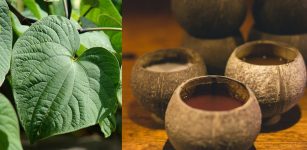 Kava – Astonishing Ancient Plant That Improves Emotional Intelligence Is Gaining Popularity In The Western World
Featured Stories | Mar 31, 2018
Kava – Astonishing Ancient Plant That Improves Emotional Intelligence Is Gaining Popularity In The Western World
Featured Stories | Mar 31, 2018 -
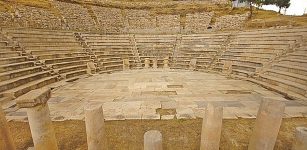 Cult Of Zeus Discovered In The Ancient City Of Metropolis
Archaeology | Dec 21, 2015
Cult Of Zeus Discovered In The Ancient City Of Metropolis
Archaeology | Dec 21, 2015 -
 Wilhelm Tell: Famous Legendary Crossbowman And Swiss Patriot – Symbol Of Freedom And Dignity
Featured Stories | Nov 2, 2016
Wilhelm Tell: Famous Legendary Crossbowman And Swiss Patriot – Symbol Of Freedom And Dignity
Featured Stories | Nov 2, 2016 -
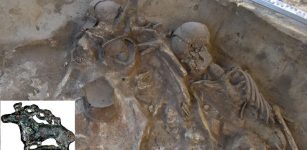 2,000-Year-Old Tumulus Of Unknown Culture Discovered In Siberia – Who Were These People?
Archaeology | Jan 4, 2023
2,000-Year-Old Tumulus Of Unknown Culture Discovered In Siberia – Who Were These People?
Archaeology | Jan 4, 2023 -
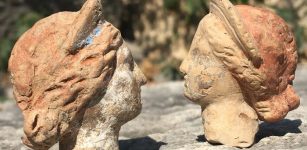 Beautiful Terracotta Figurine Collection Discovered In Myra, Antalya
Archaeology | Sep 29, 2020
Beautiful Terracotta Figurine Collection Discovered In Myra, Antalya
Archaeology | Sep 29, 2020 -
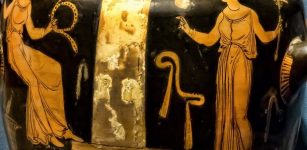 Apulian Secrets: Ancient Burial Rituals Shed Light On A Culture That Left No Written History
Archaeology | Jan 12, 2016
Apulian Secrets: Ancient Burial Rituals Shed Light On A Culture That Left No Written History
Archaeology | Jan 12, 2016 -
 Unique Ancient Structure With Mysterious V-Shaped Carvings, Wine Press And More Discovered In The City Of David, Jerusalem
Archaeology | Jan 24, 2025
Unique Ancient Structure With Mysterious V-Shaped Carvings, Wine Press And More Discovered In The City Of David, Jerusalem
Archaeology | Jan 24, 2025 -
 Smuggled 1,800-Year-Old Lydian Atonement Inscription Sent Back To Turkey By Italy
Artifacts | Sep 28, 2020
Smuggled 1,800-Year-Old Lydian Atonement Inscription Sent Back To Turkey By Italy
Artifacts | Sep 28, 2020 -
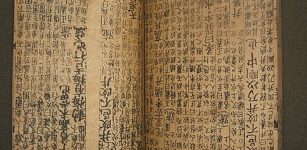 I Ching – The Book of Changes – World’s Oldest Book Of Wisdom Used To Predict Future Events
Featured Stories | Sep 12, 2018
I Ching – The Book of Changes – World’s Oldest Book Of Wisdom Used To Predict Future Events
Featured Stories | Sep 12, 2018 -
 Ancient Egyptians Were Familiar With Advanced Ink Technology 2,000 Years Ago – Copper Papyri Reveals
Ancient Technology | Nov 13, 2017
Ancient Egyptians Were Familiar With Advanced Ink Technology 2,000 Years Ago – Copper Papyri Reveals
Ancient Technology | Nov 13, 2017 -
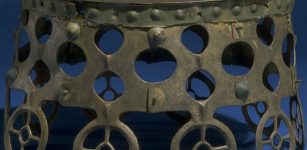 Mysterious Balkåkra Disc – Rare Strange Bronze Artifact Found In A Bog
Artifacts | Jul 25, 2019
Mysterious Balkåkra Disc – Rare Strange Bronze Artifact Found In A Bog
Artifacts | Jul 25, 2019 -
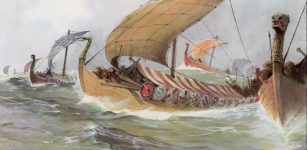 Battle Of Visby – Death Came With King Atterdag’s Ships
Featured Stories | Jul 27, 2022
Battle Of Visby – Death Came With King Atterdag’s Ships
Featured Stories | Jul 27, 2022 -
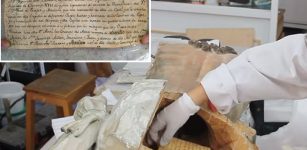 Europe’s Oldest Time Capsule Discovered Inside A Statue Of Jesus In Spain?
Archaeology | Dec 1, 2017
Europe’s Oldest Time Capsule Discovered Inside A Statue Of Jesus In Spain?
Archaeology | Dec 1, 2017 -
 Tarkhan Dress – The World’s Oldest Woven Garment
Archaeology | Feb 24, 2016
Tarkhan Dress – The World’s Oldest Woven Garment
Archaeology | Feb 24, 2016 -
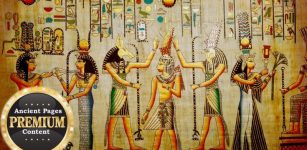 Was Ancient Egyptian Science Inherited From A Lost Atlantean Civilization?
Ancient Mysteries | Sep 4, 2017
Was Ancient Egyptian Science Inherited From A Lost Atlantean Civilization?
Ancient Mysteries | Sep 4, 2017 -
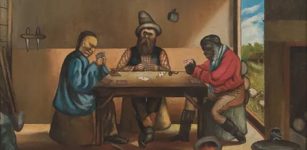 How Gold Rushes Helped Make The Modern World
Featured Stories | Aug 1, 2019
How Gold Rushes Helped Make The Modern World
Featured Stories | Aug 1, 2019



